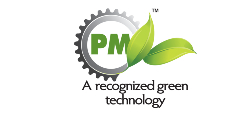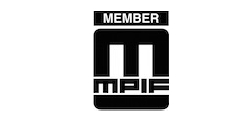Powder Metallurgy
What is Powder Metallurgy?
Powder Metallurgy is a sophisticated manufacturing process that produces ferrous and non-ferrous products, using most metal and alloy materials. The process can create complex, near-net-shape parts, making it suitable for simple or multi-step, tight-tolerance products. The process involves heating compacted metal powder just below its melting point, resulting in numerous advantages such as better material utilization, dimensional control, and complex shape manufacturing. The PM process uses highly consistent, engineered elemental or alloyed metal powders.
In summary, Powder Metallurgy is a metal forming process that involves heating compacted metal powder just below its melting point. It offers a range of advantages over other traditional metalworking processes, including the production of complex shapes, improved material utilization, and near-net-shape dimensional control.
Applications of Powder Metallurgy
The following are some applications of powder metallurgy:
- Used to create porous components, such as filters
- Powder Metallurgy creates some of the tungsten components used in jet engines.
- Moving parts for automobiles, such as piston rings, connecting rods, clutch plates, and camshafts
- A wide variety of soft and hard magnetic components
- Steel and diamond powder is used to make grinding wheels.
- Silver-infiltrated tungsten is used to make the nozzles for rockets and missiles.
- It is used to create intricately formed components, such as gears, that, when created using other techniques, necessitate machining.
- Metallic and non-metallic materials are combined to create electrical bushes for motors.
- Powder Metallurgy creates components for devices like clocks, typewriters, calculators, permanent magnets, etc.
Advantages of Powder Metallurgy
Powder metallurgy has several advantages that make it an attractive manufacturing process. First, it is an eco-friendly technique that minimizes waste, with up to 97% of the material used ending up in the finished product. The flexibility of materials used and products created is another advantage, with the ability to blend several metals and nonmetals to create a single part. The almost net shape of powder metallurgy-generated parts and goods eliminates the need for additional processing, and the dimensional precision is incredibly high. Powder metallurgy uses readily available and economical raw materials, which ensures consistent and reliable production. Finally, powder metallurgy’s consistency and reproducibility guarantee each item has accurate dimensions, ensuring repeatability in product accuracy.
Benefits of Powder Metallurgy Process The Powder Metallurgy process offers numerous benefits that make it a popular choice for many firms. One of the main advantages is its capability to produce parts that are difficult to manufacture using other metal processes. This includes parts that contain tungsten, molybdenum, or tungsten carbide, as well as porous bearings and filters that are expensive to produce using other methods. Additionally, PM can achieve soft or hard magnetics, making it a suitable choice for industries such as automotive, aerospace, and medical applications.
Another benefit of the PM process is its cost-effectiveness compared to other manufacturing processes such as casting, forging, and machining. PM uses less material to make the same part, resulting in lower production costs. Moreover, the PM process offers near-net-shape dimensional control, minimizing the need for additional machining and finishing, thereby saving time and money.
The PM process serves a wide range of industries and offers significant benefits such as cost-effectiveness, near-net-shape dimensional control, and the ability to produce complex parts. By choosing the PM process, firms can save money, receive high-quality products, and meet their specific needs and requirements.
Preserving the natural resources
The Powder Metallurgy (PM) technique helps in preserving natural resources by recycling, conserving raw materials, and generating low emissions. Although metal powder is costlier than traditional steel, the savings in material compensate for the difference. The PM process uses nearly 100% of the metal powder, especially for parts weighing less than 1kg. Even heavier parts can take advantage of this process if the steel blank requires significant machining.

Take the next step
See how Metal Sintering & Powder Metallurgy processes can benefit your next project.









© 2023 Powder Metallurgy Products

© 2023 Powder Metallurgy Products








